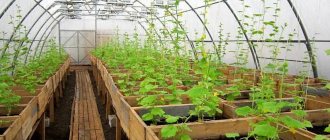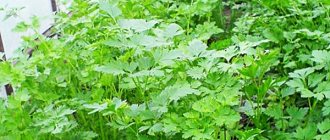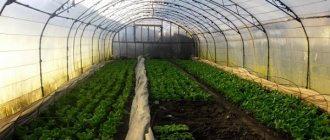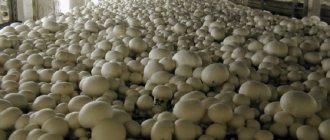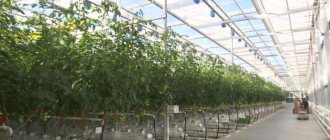Business Ideas
Agriculture
Crop farming business ideas
Business on vegetables, greenhouses, harvesting and trends related to it. Several examples of unusual foreign technologies and startups in the field of vegetable growing, urban farming and more.
Today there are two types of vegetable growing on the market – “old” – industrial, greenhouse – and – craft, farm, “piecemeal”. Despite the skeptics' grins about the idealistic farmers making organic products, this latter market is growing rapidly, is in incredible demand and, it seems, will soon bury the "plastic tomatoes" that have long been the talk of the town and hated by all consumers without exception. .
However, before our eyes, a third market segment of vegetable growing is literally being born, namely, urban vegetable growing. The designers of the “new urban environment” or, as they are also called, new urbanists, have tried to achieve this!
We are talking about turning megacities into places suitable for living - from an environmental, psychological and social point of view. The city must become a comfortable living environment in every sense - this is the main slogan of the new urbanists. To do this, we are all unanimously and urgently revising our old outdated “template of what “vegetables” are - what is grown somewhere in the village, on dirty fields, by collective farmers, and then brought to the city. The current city is a place where vegetables are grown. And they are grown (as you can guess) not by some specially trained and hired “farmers” or “peasants”, but by you and me - ordinary city residents. In this regard, a relevant question is: how will a simple untrained city dweller grow a crop of suitable vegetables if he really has not been trained in this and also does not have time? The answer is simple: the concept of urban projects in the style of new urbanism became possible only when - yes, yes - high technology appeared!
Mobile applications, software, a fully automated process - does not require the urban ecologist to have either time to “garden” or special “knowledge” about agriculture. You know, if only I had the desire to turn my city into a garden city, and the space in front of the panel house into paradise, and not all this...
*** What type of vegetable growing is the new urban vegetable growing? Does it gravitate more towards “industrial greenhouse projects” or towards “eco-farming and craft”, “cute” and “all-natural”? But, you know, it seems that we are faced with a great, unique and amazing compromise - it’s both together! Moreover, the new format of vegetable growing took only the best from both of its “parents”. As they say, from dad comes intelligence, and from mom comes beauty. By “dad” we mean, of course, the greenhouse cycle, and by “mama” we mean the craftiness of manual labor, sustainable and not “alienating” (as Marx would say) a person from his food.
Today we have collected for you several examples of new business ideas about vegetable growing and... not only vegetable growing. After all, vegetables need to not only be grown, but also preserved technologically, sold creatively and brilliantly, and cooked deliciously for the benefit of the body, finally!
Understand our ideas yourself, we will not make judgments, and take note only of what you think is useful and possible for you, and also appropriate in your region.
Black garlic business
Ancient recipes of Asian cuisine are conquering the markets of old Europe. Black garlic is not the “type” you might think. Black garlic is ordinary garlic that has been prepared in a special way. The closest word for an approximate understanding of what was done to the garlic is... it was wilted. It turns out that it's just dried garlic? Well, not quite.
In national Asian cuisine, as you know, they are very fond of spices. They have long used a phenomenon that chemists and food technologists later called the Maillard reaction. The Maillard reaction is what happens to the original food product, raw material, when it is heated. In the process of gentle, uniform, slow and long heating, (as you know) - any food raw material begins to emit a pleasant - appetizing - smell of cooking food! This happens with bread that is baked and browned in the oven, with meat whose crust smells pleasant as it cooks, and with vegetable dishes such as stews or grilled vegetables.
From the point of view of a chemist, at this moment a chemical reaction occurs between amino acids and sugars, which are contained in any initial food product - be it in meat, even in dough, even in vegetables... But thermal fermentation occurs not only in an oven at a temperature of 200 degrees Celsius!
Take, for example, “withered” fruits that are left on the tree for too long. They like to do this, for example, with cherries. If the cherries are not removed from the tree, they will turn “black” and very tasty. Winegrowers do the same with grapes. They do not remove the grapes from the vine, and as a result they also “wither”. Wine made from such grapes becomes “sweet” without adding sugar at all!
What about garlic? In the case of garlic, thermal fermentation occurs not on the native tree, but in a special heat-resistant container - such as a pan or foil. A whole head of garlic, unpeeled, is placed there and heated over low heat in the oven - literally simmered, like baked milk. But the process of “languishing” does not last a couple of hours, but... a couple of months! Garlic “evaporates” like your jellied meat, everything unnecessary comes out of it, and everything useful is not only preserved, but also chemically changes for the better.
For example, the “king of antioxidants” contained in ordinary garlic, allicin, is transformed during processing into a more powerful, beneficial and easily digestible S-allyl cysteine, abbreviated as SAC. It would seem that the technical process is very expensive and is unlikely to pay for itself. Such garlic should cost “astronomical money”. But in practice, we see that more and more people are getting involved in this new business for Europe. Moreover, these are small businesses, and not some giant concerns.
A husband and wife may well be able to pull off such a business. So, not everything is so scary, difficult and “impossible”? Entrepreneurs do not “go bankrupt” by starting such a long, expensive and freaky production. They manage to come up with a price that won’t scare anyone away. After all, you must admit that three thousand years ago in Asia there was no natural gas and electric ovens, but for some reason there was black garlic.
Black garlic is much healthier than regular, uncooked garlic. It tastes like sweet caramel (natural caramelization occurs), although there is no trace of sugar or sweeteners. All its beneficial antioxidants enhance their effect, as we have already said. Black garlic provides even more antimicrobial and antifungal effects. But it ceases to be “too spicy” for the stomach. And besides, black garlic loses its characteristic “garlic fume”, because of which many “working with people” people deny themselves this natural medicine all their lives. We can say that black garlic returned to us what society with its vanity, prejudice and glamor took away from us - the opportunity to eat garlic - so healthy and so tasty.
Where and who sells black garlic? Organic food stores, eco-product fairs, herbal and alternative medicine stores, oriental or Ayurvedic spice shops, vegan outlets. This is where it began. And now the market for black garlic also includes “haute cuisine” restaurants - finally, it has become fashionable there too! Now everyone eats black garlic, not just some special “hippies” with strangely arranged brains. And this means that it’s time for you and me to get into this business - no “excuses” (who will I sell this to? This is not my target audience) no longer exist.
Underwater rocks
According to experts, based on personal experience, green business is profitable to do in the southern regions of the country. Climatic conditions in other regions and territories require the creation of special conditions, which in turn entails significant material investments. The construction of permanent greenhouses involves the installation of heating and lighting, which will be required more in winter. In this case, regardless of the scale, the costs will not be recouped.
Before starting a green business, you will have to find a market, and in order to reduce transportation costs, it is better to find clients in the nearest locality.
It is advisable to think in advance which crops are in great demand, and at the same time calculate the frequency of sowing. In this way, the harvests will replace each other and the plot will not be idle. Experts point out that it is mandatory to take care of the destruction of pests; they are capable of destroying up to 30% of products, as well as fertilizers. This can significantly increase profitability.
Top
Write your question in the form below
Digital greenhouses
Remember, we mentioned that a modern person does not need to have the skills of a peasant and does not need to have a lot of free time (like a pensioner) to take care of a greenhouse and vegetable garden?
Where did this idea even come from? Yes, from science fiction about spaceships and the conquest of other galaxies. Do you remember these wonderful books, films, stories and TV series? Now the Tokyo Midtown greenhouse will remind you of them!
A crew of daring earthlings is flying in space, they are engaged in “great science” and “great feats of humanism,” and at this moment the greenhouses on the spaceship themselves grow food for them, because everything there has long been automated, in the yard of the 32nd century, so it won’t hurt you to look through a telescope and make entries in the logbook. Almost the same nostalgic space-cyber-punk was invented (no surprise!) by the Japanese. They created Tokyo Midtown - and not just a city greenhouse that maintains itself, but an entire art object, installation, cultural, museum masterpiece.
This is a greenhouse, and a light and sound show... This is how they turned out to be a locomotive-samovaro-helicopter! He flies, puffs, whistles and gives tea. In a very good way...
You enter the Tokyo Midtown greenhouse like an interactive museum where you can touch everything with your hands. Touch a tomato on a branch and the violins will play. If you touch a carrot bush, a trumpet will thunder.
Why did the Japanese come up with this art object, this installation? Of course, in order to attract the attention of the general public to a new lifestyle - greenhouses in the city.
Vegetables
The third most profitable option for making money in a greenhouse is growing various vegetables. What is the most profitable thing to do? In the middle zone, Chinese cabbage, cucumbers and radishes are usually grown. Tomato grows well in more southern areas. The classic cultivation of cucumbers in a greenhouse as a business brings very good income to the farmer. The natural season for cucumbers is very short - in gardens they ripen in July, and in August they already leave. But there is always a demand for them, and especially in the spring.
Tomatoes can be sold all year round
Ripe cucumbers can be stored for quite a long time, they are convenient to store and transport - this is an excellent product for mass trade. Tomatoes usually ripen a little later than cucumbers, and their storage conditions are somewhat more complicated. Tomatoes also require better lighting and heating. But radishes and cabbage are very easy to grow - they practically do not get sick, do not require special conditions and grow easily even in an unheated greenhouse practically from April to October.
AI-based greenhouse profitability forecast
The lyrics are of course good. But nothing attracts a person to a new activity more than a thoughtful consultation with an economist. Like having simple and understandable accounting tools that help you calculate everything so you don’t go broke. The accounting department is helped by sensors installed in the greenhouse. They are the ones who receive data, which are then transformed into yield forecasts and give advice on what to do to avoid unnecessary expenses or losses.
Not everyone grows vegetables “for themselves.” After all, vegetable growing is still not so much a “lifestyle” as a business. And even if it’s small, even if you grow craft vegetables for a dozen Instagram followers, you should know what you need to do to do it competently, and what you’ll get as a result. Canadian “Artificial Intelligence” called Motorleaf based on the platform – Agronomist.ai is currently offering its services to farmers who have an entire acre of land. But no more than one acre.
By the way, an acre is equal to 4046.86 square meters of arable land. Historically, an acre denoted the amount of land that one average peasant (without helpers or farm laborers!) could personally plow in one working day, using one standard team of oxen.
So, we have a compromise: the product is not created for global farms, which have thousands of acres of land, but also not for urban hipsters, who have one garden bed under a balcony or a corner in a city park, which has been transformed by new urbanists according to their eco-taste .
But our task is to go further - and offer the same product (artificial intelligence that predicts yield) to smaller “farms”, including those same lovers of healthy greenery in the city - with one flowerbed, instead of one acre. After all, this market is only growing. This means that artificial intelligence needs to be reconfigured specifically for this promising and promising segment – micro-farmers.
Types of crops and profitability
Since different types of greens are tasty and healthy seasonings, they are always in great demand. Greens are included in traditional dishes of almost all peoples of the country, so they are always in demand:
- parsley
- dill
- spinach
Dill cultivation
These crops tolerate low temperatures typical of most regions of the country, which requires sowing them in open ground. Most often, parsley is grown from seeds. The technology is quite simple; it involves keeping the planting material in a humid environment for five days, and after germination it is transferred to a colder room. They must spend another week there.
After planting, they germinate faster and tolerate temperature changes better. According to the sowing norm for 10 square meters. m requires up to 20 grams. They are laid at an obtuse angle to a shallow depth. The distance between the seeds is up to 5 cm. After planting, it is necessary to water abundantly and compact the soil.
With proper care, up to 6 kg can grow per square meter. In the cold season, a kilogram of parsley can be obtained from 180 rubles.
Dill is a little more difficult to grow. It is planted in beds in furrows laid in advance. The seeds are laid out to a depth of three centimeters. The sowing density is similar to parsley, but it tolerates temperature changes less well. It may not withstand temperatures below 15C. However, the harvest is rich. In winter, regardless of the sales region, you can earn from 200 rubles per kg.
Spinach can be planted in early spring. It is not recommended to place seeds deeper than one and a half centimeters. The first harvest appears in a month. Resistance to changes makes it possible to grow until autumn.
A business in growing greens involves selecting early-ripening and hardy varieties. If different crops are grown at the same time, the sowing order must be observed.
Perfect tomato
Everyone's idea of the "perfect tomato" is different. Basically, consumer needs are taken into account - the tomato should not be “Turkish”, not “plastic”, it should be aromatic, juicy, tasty, healthy and nutritious and resemble a tomato picked from the garden.
How do those who grow them for us imagine the “ideal tomato”? They have slightly different needs... Anyone who grows tomatoes knows that tomatoes need to be constantly pruned. So that they do not go “into leaves and stems” - no one needs them and they take away what should go into fruit.
This endless pruning of the tomato bush is as tiring as the endless weeding of the garden. Scientists decided to develop a tomato variety that would not produce so much “unnecessary” greenery and tops. It is this kind of tomato that vegetable growers call ideal.
Scientists from a laboratory called Cold Spring Harbor and personally agronomist technologist Zachariah Lipman did their best. Of course, scientists had to interfere with the tomato genome - but that’s why they are genetic breeders, to do such things. After all, wheat varieties were also developed by geneticists. And in general, they did this many thousands of years ago - that’s how modern wheat appeared. It’s just that back then the work of breeders who developed varieties and breeds was not yet called “genetics.”
Should we be afraid of the “perfect tomato”? But what about frost-resistant varieties of apple trees? Aren't you afraid of them? You decide. However, it is worth noting that the concept of so-called “sustainable development” looks askance at those geneticists who sell seeds from which a “sterile crop” then grows.
This is almost the main complaint of the general public against “cunning technologists.” But now environmentalists have stood up to their full height and directly stated: when peasants are forced to buy your seed fund every year anew, because the seeds from the harvest they received are not germinating (sterile) and you came up with this - on purpose - to enrich yourself and make a whole planet of eaters dependent on yourself - so - this is unsustainable.
This is contrary to the concept of sustainable development .
And you don’t have to do that anymore... Does the “perfect tomato” from the Cold Spring Harbor laboratory have anything to do with manipulations similar to those described above? No, he's talking about something else. It’s about preventing farmers from spending all their energy exhaustingly pruning tomato bushes from morning to night. Their tomato produces slightly less unnecessary tops. That's all. This kind of selection is probably good...
Work plan
When planning a business in growing greens, it is important to decide on the scale of activity and purpose. Some grow for their own needs, and only the surplus is sent for sale.
If there is land, then all that remains is to invest in building a greenhouse, purchasing planting material and fertilizers. You won’t reach the level of your basic income, but the investment will pay off, and there will always be fresh, environmentally friendly greens on the table. If there is a lot of land, then more investments will be required. Depending on the climate zone, work may be seasonal.
Robotic cucumber picker
Above we talked about how science makes the hard work of farmers responsible for the tomatoes on our table easier. Well, what about cucumbers? A tomato definitely needs a cucumber. It turns out that science can make life easier for cucumber farmers too.
We will not be talking about genetics, but about innocent robotics. A cucumber picking robot does this hard work instead of a human. The robot was invented in Germany. It has two gripping arms and does not harm the beds. In general, it drives carefully, and not like a bull in a china shop.
This is a whole experiment and it is called CATCH. It is sponsored by the EU, and Germany is only a pilot site. Soon robotic pickers will work instead of people during the harvest. This is the main goal of the European Union.
Why and why did the European Union need this - to replace human harvesters with robots? It is no secret that guest workers – migrant workers – come everywhere during the season to harvest the harvest (terribly hard, low-skilled and low-paid work).
Some of them travel almost under a “black flag” and are not paid anything at all for their work. And what terrible conditions they live in. In general, the problem of harvesting has always been a difficult problem. Just have time to collect, otherwise it will rain and everything will rot! It is not surprising that peasant women gave birth in the field, swaddled the baby and immediately began to work again. Strada! And remember the Soviet autumn “potato harvesting trips”, where schoolchildren, students and even enterprise employees and scientists from research institutes were sent...
So, using cheap, often illegal, almost slave labor is unethical and unsustainable. It is especially unwise to create a socially explosive environment by opening borders to people who have never seen anything good in their lives. They will get a little rich from the harvest. They will create more problems – both for themselves and for others.
Growing methods
Hydroponics
This is a unique technology that allows you to grow plants without the use of land. The system is organized in such a way that all crops stand in water filled with mineral fertilizers and various fertilizers.
This method has the following advantages:
- You can easily regulate the feeding of fertilizers to plants. Only you determine what substances they receive.
- Water does not disappear or evaporate, saving on constant watering.
- Fertilizers do not disappear “to nowhere”.
- No pesticides or herbicides needed.
- Plants are more durable.
The disadvantages are:
- It's easy to make mistakes - the slightest mistakes in calculations can destroy an entire culture.
- Not suitable for all plants.
- It is quite expensive (from 100,000).
Intermediate option
For some crops, you can use the so-called intermediate option. In this case, ordinary soil is treated with so-called liquid fertilizers used in a hydroponic system.
This method combines the advantages of both methods. The resulting fruits are juicier and larger, and have unique taste qualities. But such a system is very difficult to implement. To install it, you need a considerable amount of rubles.
Mobile beds
The third option for growing in greenhouses is the organization of portable beds. It is best to plant crops in small boxes with high sides, into which fertile soil is poured.
The advantages are as follows:
- The soil warms up very quickly, even in winter.
- Any stagnation of moisture is excluded.
- There are no temperature changes.
- It's easier to weed and plant plants.
- Organized on any soil, even not suitable for planting.
- Saving space in the greenhouse.
The disadvantages are:
- Such plants need feeding more than others.
- The soil may rot.
- Not suitable for growing cold-resistant crops.
Greenhouse city
Let's start from afar. Usually there are two options: if you want to work in a greenhouse, you go to the village and start trying to make money on vegetables - handicraft: half modern, half like your great-grandmother. Both halves. As they say, the worst and the compromise is not ideal.
So, having imagined a bright future for yourself, you go to a Quite Deaf Village. So that there would be “nothing” there (nowhere to go) and morals would be appropriate - just like in the wilderness. And of course, it would be desirable that in this remote village everyone would have long since been engaged in handicraft greenhouses or, excuse me, booths. (This is what greenhouses are called in the Krasnodar Territory and Rostov Region). Surrounded by showroom neighbors, it will be easier for you to join this difficult business.
The second option is more from foreign experience. If you want to engage in greenhouses and grow vegetables for sale, you go on a long business trip “to the virgin lands”, to some industrial complex engaged in agriculture - industrially, as we have already said. The root “village” in the word “industrial agriculture” is a rudiment, an atavism; there is no “village” in that business process even close.
Hundreds of hectares of land are occupied by greenhouses, which intensively produce “Turkish tomatoes” with the intensive use of artificial chemical fertilizers and hydroponics. There, greenhouses stand in rows in an open field and resemble (from an airplane window) a closed military chemical plant for the production of uranium.
Both of these options are bad. There is nothing inspiring, modern or innovative about them - each of them is “no” - in its own way. All this is the past, respectively: the 19th and 20th centuries. And both of these examples of the “greenhouse business” are about how people terribly spoil the environment.
Now let’s learn about the ideas of the 21st century. Greenhouse city.
It turns out that it is possible to build a village that will look like a “city” in the minds of environmentalist dreamers and hipsters. This is not the wilderness, there will be everything you are used to, including normal communication. And most importantly, all the life activity of this village (we would say this Science City) has a zero carbon footprint.
An entire village producing vegetables for the market on a commercial basis does not harm the environment in any way? Is this really possible? Maybe! An agricultural center has emerged on the border between Hungary, Austria and Slovakia, with the ambitious goal of becoming “the new standard for sustainable business development and sustainable living in Europe.”
This project costs a lot: 1 billion euros. The “City of Teplitz” occupies as much as 330 hectares. The project is supported by two organizations: the German FACT (manufacturer of energy-efficient greenhouses and much more in the field of sustainable development) and the largest supplier of “green energy” in Europe – the EON concern.
The main sources of “green energy” for the greenhouse city are as follows:
- biogas,
- solar Energy,
- biothermal power plants.
In the greenhouse city they will grow greens, vegetables and fish all year round. Moreover, fish will be grown in special coastal river zones, and not in artificial reservoirs, characteristic of old (completely non-ecological) methods of intensive commercial aquaculture.
Greenhouse City is the brainchild of three specific people who are behind this project. We present them to your attention: FACT Director Hubert Schulte-Kemper, EON Director Alexander Fenzl, Hungarian Minister of Agriculture Istvan Nagy.
According to these people, they are creating nothing less than “new sustainable cities” and completely “changing the era” in agriculture. They create living and working spaces at the same time - and both spaces are sustainable, that is, they do not harm the environment.
The greenhouse city has 1,000 residential buildings for those who will work there. People in the village do not live on a “shift basis” or in a slave-like manner. It's okay. In addition to residential buildings, the Greenhouse City has built a kindergarten, a school, hotels and shops and other infrastructure common to a normal city.
Sales of finished products
The owner of a greenhouse or greenhouse farm will have to carefully consider the issue of selling products. Grown vegetables, berries and herbs can be:
- sell on the market independently or through a hired seller;
- hand over for sale to a grocery store or supermarket;
- sell to wholesale buyers;
- offer to restaurants and cafes;
- sell through an online store or agricultural cooperative.
The most profitable option is independent retail sales. Wholesalers purchase products at the minimum price, and stores cannot guarantee the sale of the entire batch taken. The returned balances will have to be added to the losses.
Owners of several greenhouses, faced with the need to sell a large harvest, should buy a machine for prompt delivery of products to customers, as well as hire a manager who will search for new sales channels.
How to open a flower shop from scratch and draw up a competent business plan with calculations - read in this article.
An abandoned depot turns into the city's "green lungs"
But not every city can or wants to be a greenhouse. There are cities that would like to “stay to their own.” But even such cities can no longer remain what they became in the 20th century, the century of smog, traffic jams and unhealthy haste!
Still, whether the city wants it or not, in the 21st century it will be forcibly greened! And (it’s worth reminding you) today’s concept of “greening the city” does not in any way provide for “useless landscaping” and always implies gardening in one sense or another, in one percentage or another.
So you and I are again running into a greenhouse, which, apparently, we will soon not be able to escape, even if we go to the very heart of some “monster city.” For example, Italian Milan.
Who knows - Milan is a symbol of “hurrying” Italy. It is located in the north of the “boot” and is, as it were, its “unofficial capital”. But it must be said that the “north of Italy” is sharply different in mentality from the “south”. Northerners are very rich, even extremely rich. They are literally obsessed with money. And they do not in any way resemble those “Italians” that we are all used to imagining. You can imagine Milan, the capital of these people. Milan can best be imagined from the first panoramic shots of the film “Night” directed by Antonioni.
There is no room for greenery. The whole city is bankers stuck in a traffic jam, and above it all is architectural Mordor - in the style of Le Corbusier. Not a single tree. One gasoline. So here it is. Cities like Milan (or Detroit) often have rust belts. In America, such “rust belts” are several states, from where in the mid-20th century, due to scientific and technological progress, the old, no longer needed industry, which did not meet the needs of the market, left.
What is the "rust belt"? This is an abandoned, depressed, degraded area (sometimes one commercial facility sticking out in the middle of the city, sometimes an entire region, sometimes a city). This is a frightening building, which is “on whose balance sheet it is not clear”; it is a piece of land turned into a wasteland, since again it is not clear “on whose balance sheet” it is located and who is obliged to mow the ragweed there.
Milan has two such eyesores: two abandoned railway stations, branches:
- Scalo Farini
- and Scalo San Cristoforo, which is also connected to a former shipyard, that is, standing in close proximity to the river, industrial port...
The problem of re-equipping stations that no one needs is included in the Redevelopment Master Plan called Agenti Climatic. Responsible for this Master Plan are two organizations related to ecology and sustainable development: Laboratorio Permanente and an organization called OMA.
The two former stations are called "green zone" and "blue zone" respectively. The first will clean the air of the super-polluted city of Milan. And the second (the one located near the former port) will purify groundwater. And when all this is cleared, it will be possible to build greenhouses in the city, perhaps in the territories of the green and blue zones.
All abandoned infrastructure areas (“Rust Belt”) must be redeveloped as soon as possible. Today you can create coworking spaces and hipster spaces in them - but this, again, is a thing of the past. Today, sustainable development and ecology are on the agenda. Therefore, every piece of city land will soon become a “green filter”, and a little later (when the land and air are restored) a new city greenhouse!
Demand organization
You need to advertise your product targeting urban residents. It is useless to sell vegetables and fruits in the region; most village residents grow their own food. It makes sense to advertise in newspapers or on television. Decorate your market location brightly and attractively so that even a casual passer-by will notice you.
New smart district in the Netherlands
Now the smarter you are, the greener you look. In the Netherlands you can see this lovely urban vegetable garden again - right in the middle of the urban city.
In the Netherlands, another company called UNStudio from Amsterdam tried. The smart district was built in the city of Helmond, in the south of the country. This new district is called: Brainport Smart District (BSD). The company UNStudio is helped by its own subsidiary called UNSence.
This tech startup focuses specifically on the next fashion business. He creates “turnkey” areas - living laboratories, in which, note: the area itself produces food for its needs and, at the same time, energy. Also, this district itself (Himself, Karl!) sorts and processes its waste, rather than taking it to Shies.
For now, this area is experimental. Tilburg University is now taking a closer look at his life. If he likes it, the project will be scaled up and broadcast further. Maybe it will reach us too.
Pre-sale options
One of the simplest options for selling finished products is to simply sell fresh vegetables or fruits. They can be either offered to stores or sold independently at the local market.
The advantages are:
- Almost every consumer needs the product.
- There is always demand, in any season.
- Relatively low cost.
- No expensive equipment needed.
The disadvantages are the following:
- There are many competitors, you just may not find your consumer.
- The product disappears very quickly.
Dried
The second option is to dry vegetables or fruits yourself, making dried fruits or ready-made spices. Dried or frozen crops are just being introduced to the market, but have already gained popularity.
The following are the advantages:
- Long shelf life.
- High demand during the winter season.
- Ability to supply products to large organizations.
- Good profitability.
The disadvantages sound like this:
- When dried, vegetables and fruits lose significant weight.
- Large loss of vitamins and minerals.
- You need to purchase expensive equipment.
In the form of semi-finished products (products in jars, sauces, jams)
The last option is suitable for large greenhouses where a huge number of crops are grown. If you regularly suffer from excess vegetables and fruits, you can start processing them.
Among the advantages:
- Huge demand.
- Possibility to organize a huge range of products.
- Long shelf life.
The disadvantages are:
- The need to buy very expensive equipment.
- High price of products.
Home farming startup: robot grows lettuce
Well, how can we not mention the people who know how to turn their “south window” into a home greenhouse? Business thinks about such people too! They are not left to their own devices!
Real business understands that this private sector also needs to be developed - after all, it itself is actively developing: that is, the demand for “window gardening” is growing more and more, and its adherents want everything to be like in the 21st century! So, the trend is home farming. When you don’t even have six acres, but only one window sill. Well, or a greenhouse the size... of a flower tent.
A startup called Iron Ox believes that today even the average person can engage in robotics. Today is not like yesterday. The robotic arm involved in the process of growing lettuce can plant seeds in trays, replant them, monitor its condition, preventing mold and pests. At the same time, thanks to machine learning, plant growing will be optimized.
Just yesterday it was difficult and dangerous. Why? Because - firstly, the software was very unreliable and not debugged, and secondly, sensors for robots cost a lot of money. But technologies tend to get cheaper, become widespread and banal, very simple and understandable to use - accessible to everyone. Compare this with the history of mobile phones or (if you dig deeper) personal computers. A computer the size of a room or a first-grader’s tablet, a retired grandmother’s phone... Exactly the same thing is now happening with robotics!
In our example, robots came to the aid of two American states - California and Arizona. Everyone grows lettuce there, handicraft and industrially - old and young - much like in the Krasnodar Territory “everyone” grows the famous “southern” tomatoes, and in Abkhazia “everyone” grows tangerines.
But global climate change means drought and extreme heat could literally kill lettuce growers' business. The startup Iron Ox solves two problems at once: a problem typical of “handicraftsmen” and a problem typical of larger “industrialists” - owners of several greenhouses. So-called home farming (handicrafts) is immediately confronted with a fact:
- You guys don't have enough water (don't fill up at the meter)
- and you have very little land - one pot, to be specific.
In this case, you need to be able to squeeze the maximum out of your initial conditions. And only a smart robot can cope with the task of growing a Garden of Eden in a handful of soil by watering it with one drop of water! It turns out that the robot doesn’t need “more” land and water to grow your lettuce.
The second problem is the problem of large farmers. They are faced with the fact that fewer and fewer living people want and are willing to be hired for low-paid and unskilled labor and to “plow” in greenhouses. There are literally no workers to be found. And those that exist inspire horror and create problems. After all, as a rule, all such workers are labor migrants. In the case of Arizona and California - Mexicans. Almost all of them are illegal. The situation is similar with seasonal workers from Central Asia and Russia.
What to do? We have already written that robotization in harvesting is going to put an end to labor migration and the negative social and political consequences that it causes once and for all. But the entire process, not just harvesting, can be robotized. This is exactly what the startup Iron Ox can boast of. The iron bull is replacing the peasant horse...
Monthly expenses
Greenhouse maintenance (weed removal, crop removal)
Once you plant the first seeds, the costs don't stop there. The greenhouse needs to be maintained every month to ensure the plants feel comfortable and grow quickly.
To remove weeds and ready-made fruits, you need to hire several workers. A large greenhouse will require at least 5-6 employees. They will have to pay about 150,000 rubles per month. At the same time, hire workers only in the summer, when it is impossible to cope with the collection of vegetables and fruits on your own.
Lighting
One of the biggest expense items is electricity. So that plants can grow safely even in winter or in dimly lit regions, it is worth installing a lighting system on the site or at least installing several lamps.
On average, you will have to pay about 1,500 rubles a month for electricity. For warm regions where the sun shines almost all year round, the amount will be less. On the contrary, if you live closer to the north, where it always rains, be prepared to pay a hefty price.
Heating
Regardless of what region you plan to open a business in and what time of year you plan to grow, you will have to spend money on heating. Even in summer there are cold evenings, and in spring there are severe frosts.
The price directly depends on what type of fuel you choose. Usually the most cost-effective option is heating with solid fuel, such as wood. However, some farmers choose electricity. In any case, in winter you will have to allocate 45,000 rubles for this expense item.
Fertilizers
Another important point in terms of monthly expenses is the regular processing of vegetables or fruits with the help of fertilizing. In addition, the greenhouse must be protected from insects, otherwise the crop will quickly deteriorate.
On average, about 15,000 rubles are spent per month. You can't skimp on this. Be sure to buy mineral supplements. If necessary, purchase humus from local farmers. An excellent fertilizer is manure, it is both cheap and effective.
Water for irrigation
In all greenhouses, huge sums are spent on water supply per month. The exception is a solar vegetarian, but the water that the structure accumulates is not enough. You will still have to spend money on watering.
However, you can use water wisely. Construct a semi-automatic system that independently waters all your plants at predetermined and programmable times. In this case, you need to spend about 3 thousand rubles on water per month.
Depreciation
Every business needs to allocate a certain amount for equipment depreciation. This concept hides part of the money allocated for the gradual wear and tear of equipment.
It is worth calculating depreciation so that after 5-10 years, when it is no longer possible to use the same greenhouse, you can sell the greenhouse at its residual value, take money from the depreciation fund and immediately buy a new one. It is better to allocate approximately 3,500 rubles per month.
Harvest delivery
Also leave a certain amount for the delivery of vegetables and fruits. The exception is if you do not trade yourself, but negotiate with suppliers. In this case, the stores themselves take the goods from you.
If you transport large quantities of goods yourself, it will cost about 15 thousand rubles per month. For this money, you can periodically hire a truck and strong guys to unload boxes. In addition, you will have to pay for a point on the market.
Vertical farms: fashion today and the future of tomorrow
Any sustainable farming system uses 1% of the land and 5% of the water of the volume that is necessary for “ordinary” gardening - be it a greenhouse, or the old fashioned way - ground, grandma's.
Sustainable farming company Plenty introduces its new product – Tigris. These are the famous “vertical greenhouses”. You probably guessed why greenhouses are vertical. The principle is the same as several thousand years ago - in that same one of the seven “Wonders of the World”, which we all remember under the name “The Hanging Gardens of Babylon”.
The land needs to be saved. Therefore, to save space, you (even in the arrangement of your small apartment) use a rarely used vertical.
For example, before the TV “ate up the space of the room”, since it stood on a stand, which in turn stood on the floor and took up everything. Now the designers have seen the vertical of your room and looked carefully at the wall, which they used to use funny before - they hung pictures there. And when the TV is now hanging on the wall, this means one thing - it does not “eat up” the space of your living space. Hanging on the wall, it does not prevent anyone from walking around the room.
The concept of sustainable development uses the same principle. It is not enough for greenhouses and fields to be “ecologically friendly”. They also need to be “placed vertically” so that they do not take up much space on the ground.
Does this mean “disrespect” for greenery? What do you! Not at all! On the contrary, this means that we will now have much more greenery! The owner of the startup Plenty, Matt Barnard, generally spoke directly and harshly. It turns out that:
The existing vegetable growing system (with or without pesticides) provides humanity with fresh fruits, herbs and vegetables - only one third of the required healthy diet. This leads to the fact that only two categories of people can have fruits and vegetables on their table: those who were lucky to be born and live in countries with a Mediterranean climate and... the rich.
Vertical greenhouses are not just vertical. They are also “smart”. Robotization of the process allows for precise control and regulation of climate and lighting. The harvest is obtained with higher efficiency and is more useful than in conventional agriculture. Do you want to grow like grandma? There will be low efficiency and a handful of “homemade” tomatoes - yes, tasty, but unprofitable.
Do you want to grow like the conventional “Türkiye” or China? There will be a lot of tons, but it will be unhealthy and tasteless. The way out of this impasse is smart vertical greenhouses. They will allow us all to forget this terrible archetype of “Turkish tomatoes” like a bad dream.
14.09.2020
Save the article to study the material carefully
Remember article
You can save this page using:
Governmental support
The turning point in the current situation seems to have arrived. Unfortunately, this business has been struggling for more than twenty years. The needs of this business were not previously heard by society in the person of energy suppliers operating with the help of discriminatory quotas.
The necessary adjustments were made by the Russian state program for agricultural development 2013–2020 (Government Decree No. 717 of July 14, 2012). Increasingly, entrepreneurs are interested in the question: where to start a greenhouse business?
What flowers are suitable for greenhouses?
Roses feel great in a greenhouse
What flowers can be grown in greenhouses? Daffodils, roses, lilies, peonies, hyacinths, and irises feel very good here.
But it is necessary to understand that a flower greenhouse is a modern high-tech system in which all the necessary conditions for growing a certain type of flower must be maintained with very high precision.
The required microclimate is achieved using complex ventilation, watering, and heating systems. And, before you start building a greenhouse, you need to clearly decide what kind of flowers will be grown in it. All the necessary conditions should be created for these flowers.

